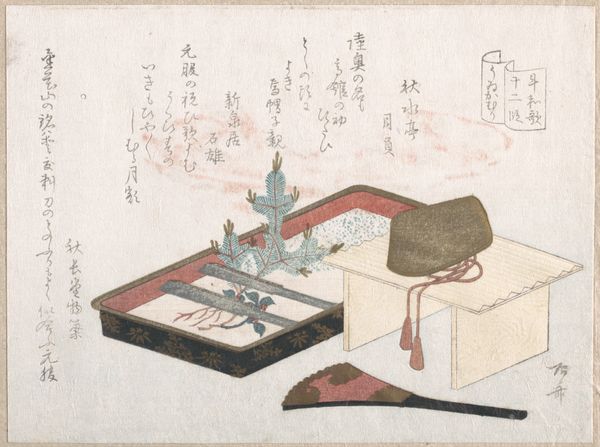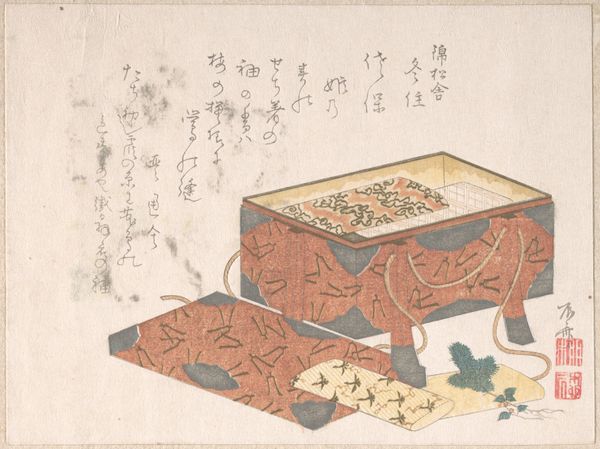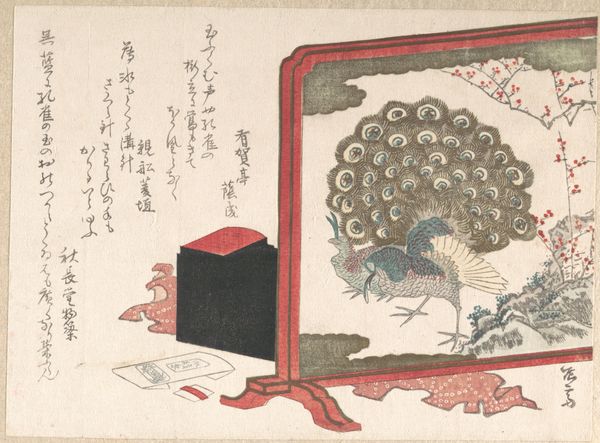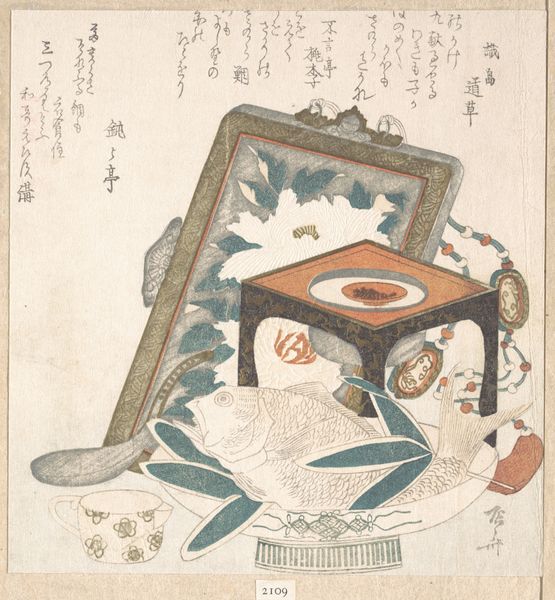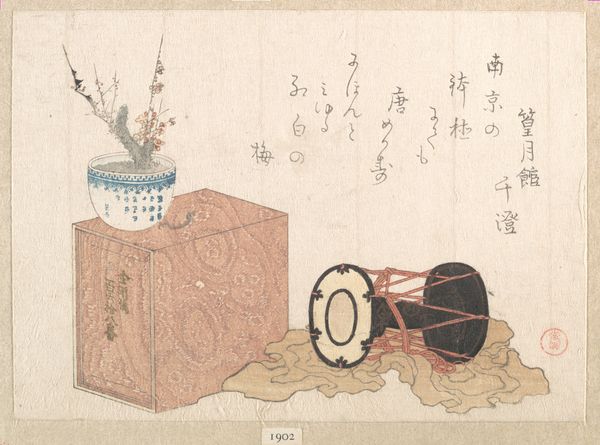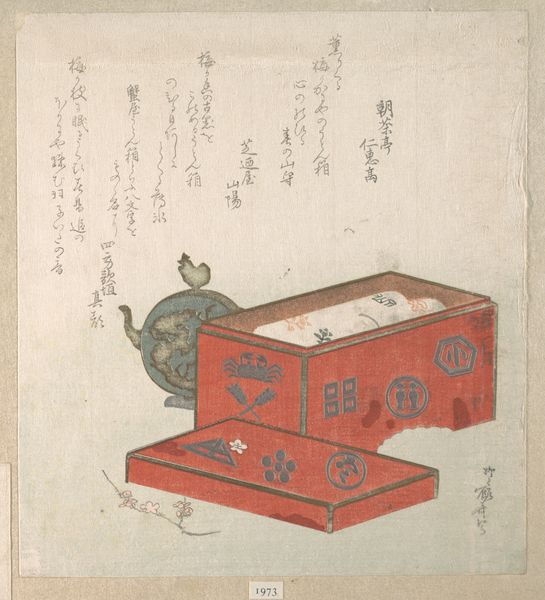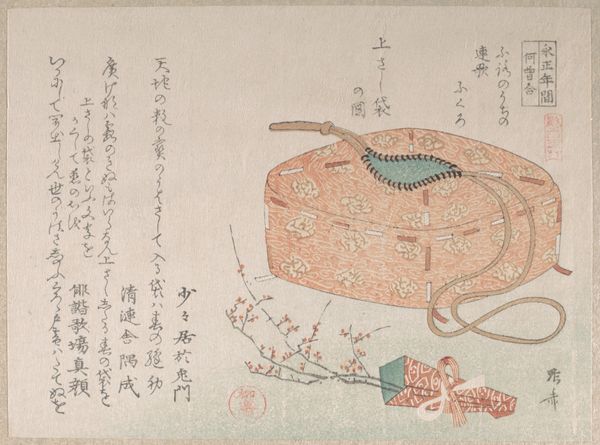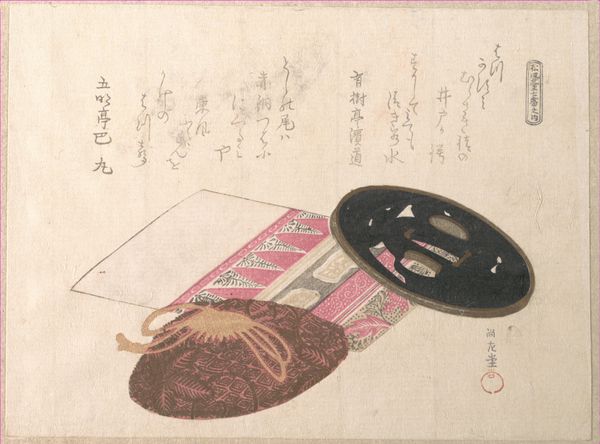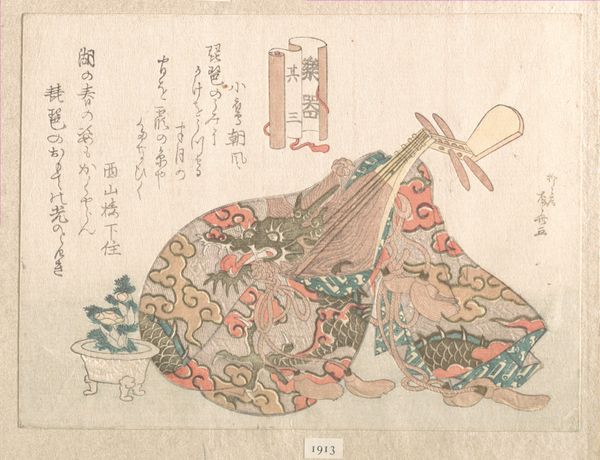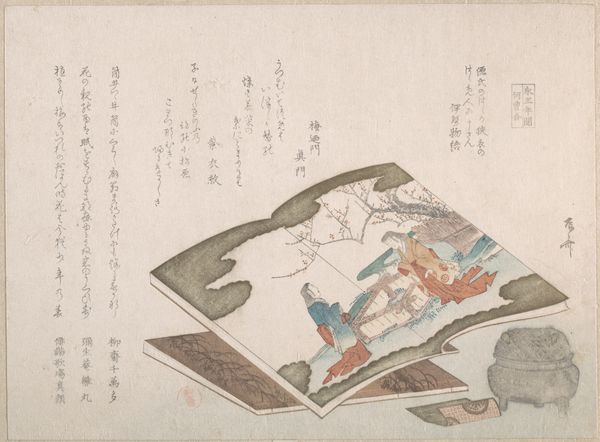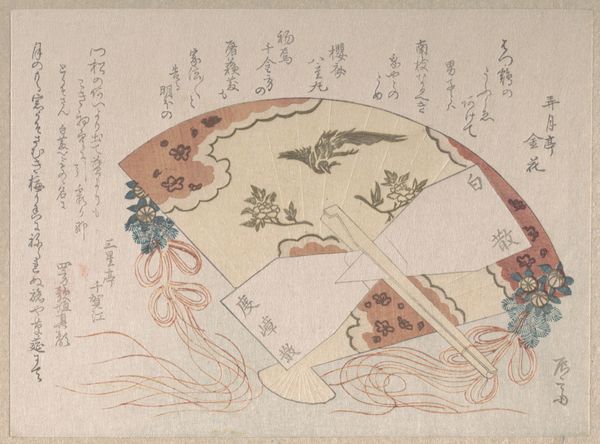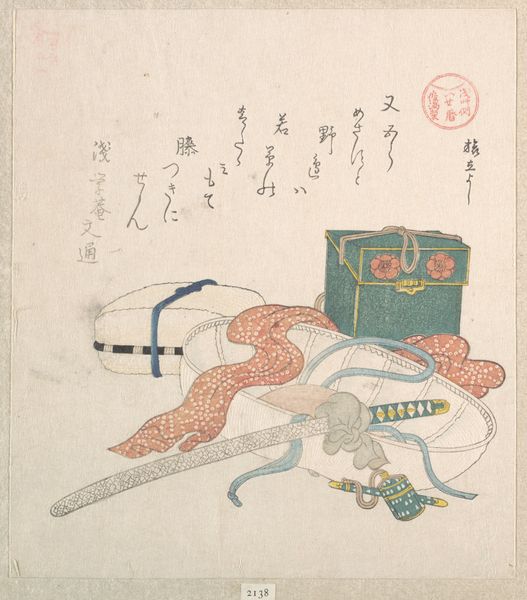
Dōran (Square Leather Box Used as an Inrō) with a Watch as a Netsuke From the Spring Rain Collection (Harusame shū), vol. 3 1817
0:00
0:00
print, etching, woodblock-print
# print
#
etching
#
asian-art
#
ukiyo-e
#
japan
#
woodblock-print
Dimensions: 5 9/16 x 7 1/4 in. (14.1 x 18.4 cm)
Copyright: Public Domain
Curator: Welcome. We're looking at a print by Hokusen Taigaku. This woodblock print with etching, created around 1817, is titled "Dōran (Square Leather Box Used as an Inrō) with a Watch as a Netsuke" and comes from his series "Spring Rain Collection, vol. 3." Editor: Hmm. It feels playful, almost like a peek into a miniature world. The detail is incredible! It’s a small domestic scene somehow made precious, you know? The palette of soft reds and blacks enhances this sense of delicate intimacy. Curator: Precisely! Taigaku presents everyday objects as refined art forms. These inro boxes, worn suspended from the kimono sash, were status symbols, like carrying tiny sculptures with functional purpose. And look closer...that is an intricately crafted pocket watch presented like a netsuke. Editor: Genius. But what’s in the box? Are those...little people? Sort of cramped looking in there. And the box has that kind of sinister yet cartoonish look to it. It gives it some bite and it subverts your ‘high art’ reading that you just suggested. Curator: Quite right, though their confined appearance prompts consideration of the restrictions in social hierarchies during that period. There are scholars who debate if these figures hint at some sort of subtle critique of social constraints during the Edo period in Japan. What looks like pure design is laced with a certain sense of humor with purpose. Editor: So it is social commentary hidden in what first appears ornamental and trivial? Art always reflecting something back to society in its period. So, is that why it’s in the MET collection now, for us to chew over? Curator: Not always of course. It’s partly a consequence of changing tastes. Today's luxury is yesterday's ordinary artifact or the reverse. In this case, something in the everyday brought something vital, and complex, back to Taigaku’s society through imagery. I believe, these are vital reminders that the past had anxieties of its own. Editor: Makes you think about the little digital boxes we all live in now, right? Anyway, I appreciate the look into a new, old world of social critique—and style.
Comments
No comments
Be the first to comment and join the conversation on the ultimate creative platform.
